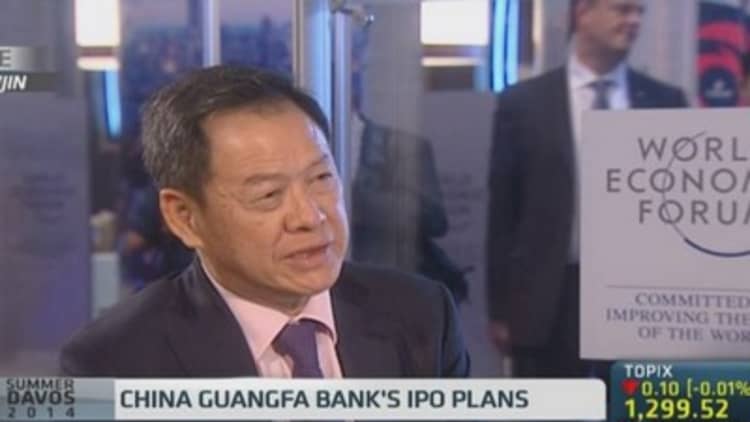China's central bank is set to inject about 200 billion yuan ($32.66 billion) worth of three-month loans into five or six listed banks to keep liquidity ample and support the slowing Chinese economy, four sources with knowledge of the matter said on Friday.
The injection follows signs that Chinese investors are beginning to bet that the PBOC is going to reduce the official deposit rate, now fixed at 3 percent.
Read More China banking crisis? Here's what it might look like
And it came after a 500 billion-yuan injection the People's Bank of China (PBOC) made into China's top banks last month via its standard lending facility (SLF) in the form of three-month loans.
"Banks got the notice this afternoon but perhaps will only receive the funds next week. This injection focuses on listed joint-stock banks," one source said.
Read More China's shadow banks need 'close monitoring': IMF
Analysts also suspect that recent moves to guide traded short-term rates by lowering the guidance rates for repo contracts may be buttressed by cuts in nominal lending rates. The aim would be to encourage state-owned banks to lower the cost of credit for productive investments.

Central bank officials whom Reuters contacted couldn't immediately confirm the injection plan.
Regulators were concerned by signs of slowing loan growth this summer, but yuan loans picked up in September, relieving worries that demand was slackening.
Read MoreWhat a change of guard at PBOC would mean for markets
However, the Friday standard lending facility shows the central bank is still engaged in targeted easing to keep cash in the system.
China has injected a net 44 billion yuan for the year through open market operations, compared with 113 billion yuan in 2013. But it has begun to intensify its use of short-term facilities extended directly to banks in 2014, a method which some analysts criticize as being relatively opaque.
Read More Is this the China stimulus we've been waiting for?
The PBOC has so far held back from a deeper across-the-board easing such as a reduction of bank reserve requirement ratios (RRR) that would result in a big, sustained upward adjustment to the base money supply. Some economists question how long it can rely on short-term targeted tools to keep credit flowing.
"There was very weak loan demand in the third quarter, which would generally indicate lower lending in the fourth quarter, but this is likely to be offset by continued monetary loosening and lending support," wrote Oliver Barron of NSBO in a research report on Friday.
"We consider an interest rate cut is likely in the fourth quarter, while continued tight liquidity also makes an RRR cut in the first quarter of 2015 likely as a way to replace the maturing 500-billion yuan SLF."

